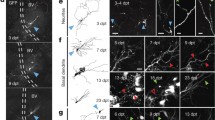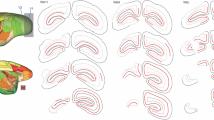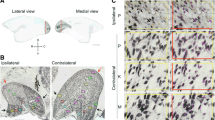Abstract
Monkeys with bilateral excitotoxic lesion of the CA1 field of the hippocampus were severely impaired at learning visuospatial conditional tasks. This was not a general spatial impairment, because the animals were not impaired on serial spatial reversal, which requires response flexibility in the spatial domain; they were not impaired at learning to choose the position furthest away from a single stimulus, which requires analysis of spatial layout of the test area, and they were not impaired at discriminating between two patterns that differed only in orientation. CA1-lesioned monkeys were impaired at learning a visuospatial conditional task when trials of the two component types ”if AA go left” and ”if BB go right” were presented according to either a pseudorandom or alternating schedule; but they were not impaired if one component type of trial was presented until three consecutive correct responses were made, followed by the other type of trial, to three consecutive correct responses. In all cases testing continued until a criterion of 27 of 30 consecutive correct responses across both types of trial was achieved. Although this suggests that CA1-lesioned animals are particularly prone to interference effects, they had no difficulty in learning ten concurrent visual discriminations presented against either a uniform background or with each discrimination presented against its own distinctive background, a condition that might reduce interference in unoperated monkeys. Interference following hippocampal damage might occur at a deeper level than stimulus identification such that animals with hippocampal damage may be able to learn about many aspects of different stimuli in parallel but may be unable to learn about multiple related aspects of the same subject matter. Monkeys with grafts of fetal CA1 tissue in the lesioned CA1 field showed significant improvement relative to CA1-lesioned animals on those tasks on which CA1-lesioned animals were impaired, although they remained impaired relative to control animals. This suggests that the grafts had produced some improvement in performance. Grafted monkeys did not differ from unoperated control monkeys or from CA1-lesioned monkeys on those tasks that were not sensitive to CA1 damage. This demonstrates that the grafts did not have an additional deleterious effect on cognitive performance.
Similar content being viewed by others
Author information
Authors and Affiliations
Additional information
Received: 15 August 1996 / Accepted: 9 December 1996
Rights and permissions
About this article
Cite this article
Ridley, R., Pearson, C., Kershaw, T. et al. Learning impairment induced by lesion of the CA1 field of the primate hippocampus: attempts to ameliorate the impairment by transplantation of fetal CA1 tissue. Exp Brain Res 115, 83–94 (1997). https://doi.org/10.1007/PL00005688
Issue Date:
DOI: https://doi.org/10.1007/PL00005688




